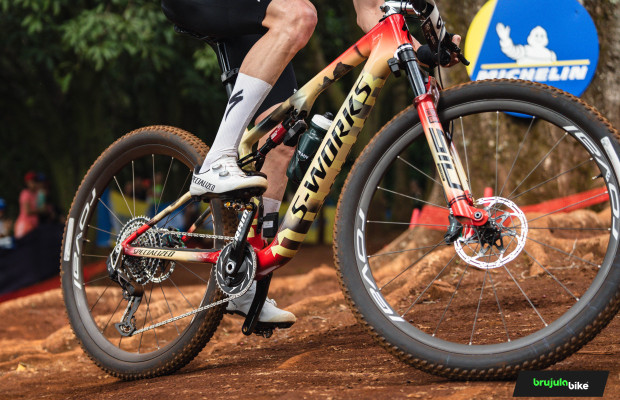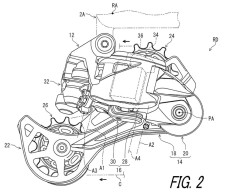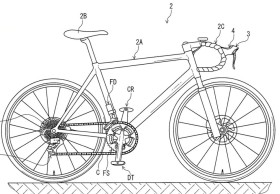These patents point to a completely wireless Shimano electronic groupset
The registration of two patents reveals that Shimano could have in its hands the design of an electronic and wireless group. The Japanese giant would be working on this line that would allow it to match in technology its two main rivals in the market. Some speculations indicate that the first models could be designed for gravel.

Shimano jumps on the bandwagon: a new electronic and wireless groupset on the cycling horizon?
Cycling lives with constant novelties that manufacturers announce with great fanfare. The wheel of evolution spins tirelessly in search of the next invention that will shake up the market. The transmission -the groups in general- are usually some of the elements that attract the most attention, even though it seems that Shimano intends to follow a continuous line in order to align itself with the other existing wireless electronic groups.

RECOMENDADO

The cyclist's patience: how long, gentle training sessions build your best season

Tips for cycling in the rain

25 cycling gifts ideas to get it right

When do helmets have to be changed? Do they have an expiration date?

Some reasons to stay away from the road in winter

S-Works: what does it really mean and where does Specialized's most exclusive label come from?
Shimano seems to have started the year with the intention of leaving behind a 2023 full of negative news -the decrease in profits, the controversy over the labor conditions of one of its suppliers or the million-dollar recall of thousands of cranks-. If a few months ago came the patent for an electronic suspension for MTB, now Shimano is heading towards an electronic and wireless group.
SRAM was the first to launch this type of groups on the market. The American firm took the lead and it took some time for Campagnolo to release its version, while last month the Chinese L-Twoo appeared on the scene.
On the other hand, Shimano's Di2 group is electronic but lacks completely wireless technology; that is, while the shifters are cable-free, the connection between the battery and the derailleur and the rear derailleur is wired. However, the catalog of the Japanese giant could change soon if the recently registered patents end up seeing the light.

Shimano has registered two patents in which it can be seen that each derailleur has its own battery and they are designed to work wirelessly. The document itself explains this point: "Each of the components of the bicycle RD (rear derailleur) and FD (front derailleur) includes an electrical power source such as a battery".
The patent also includes the possibility that the battery-derailleurs connection is made through cables, although this could respond to the usual need to protect the intellectual property of inventions; Shimano's commitment to an electronic wireless group seems clear.
Another key line of the text states that "the rear derailleur is configured to be wirelessly connected to the front derailleur".

The arrival of this system could first land in the GRX range for gravel. These assumptions are based on the drawing that Shimano uses to illustrate how the group would look mounted on the bicycle. The Japanese choose to show it with the drawing of a bike with suspension on the fork but with thin wheels, a hint of what could be the immediate future of this invention.

For now, this is all that is known about the new group that Shimano would be working on. Patents are only possibilities, intentions that only time will tell if they materialize. Still, it seems reasonable to think that it will see the light sooner or later if we take into account the catalogs of the competition and the direction in which the industry is heading.